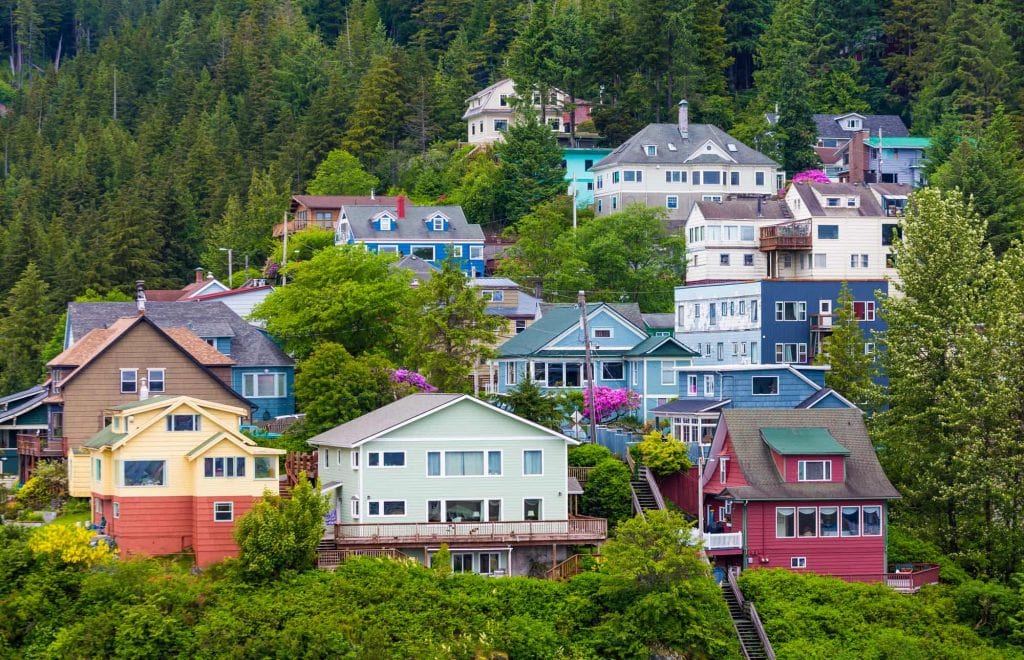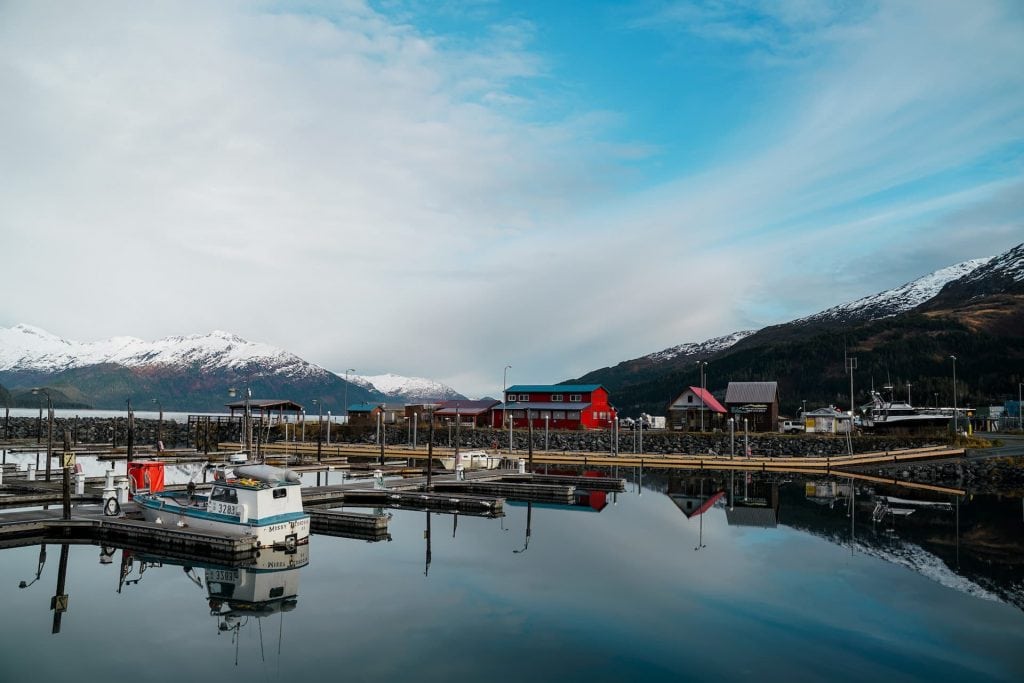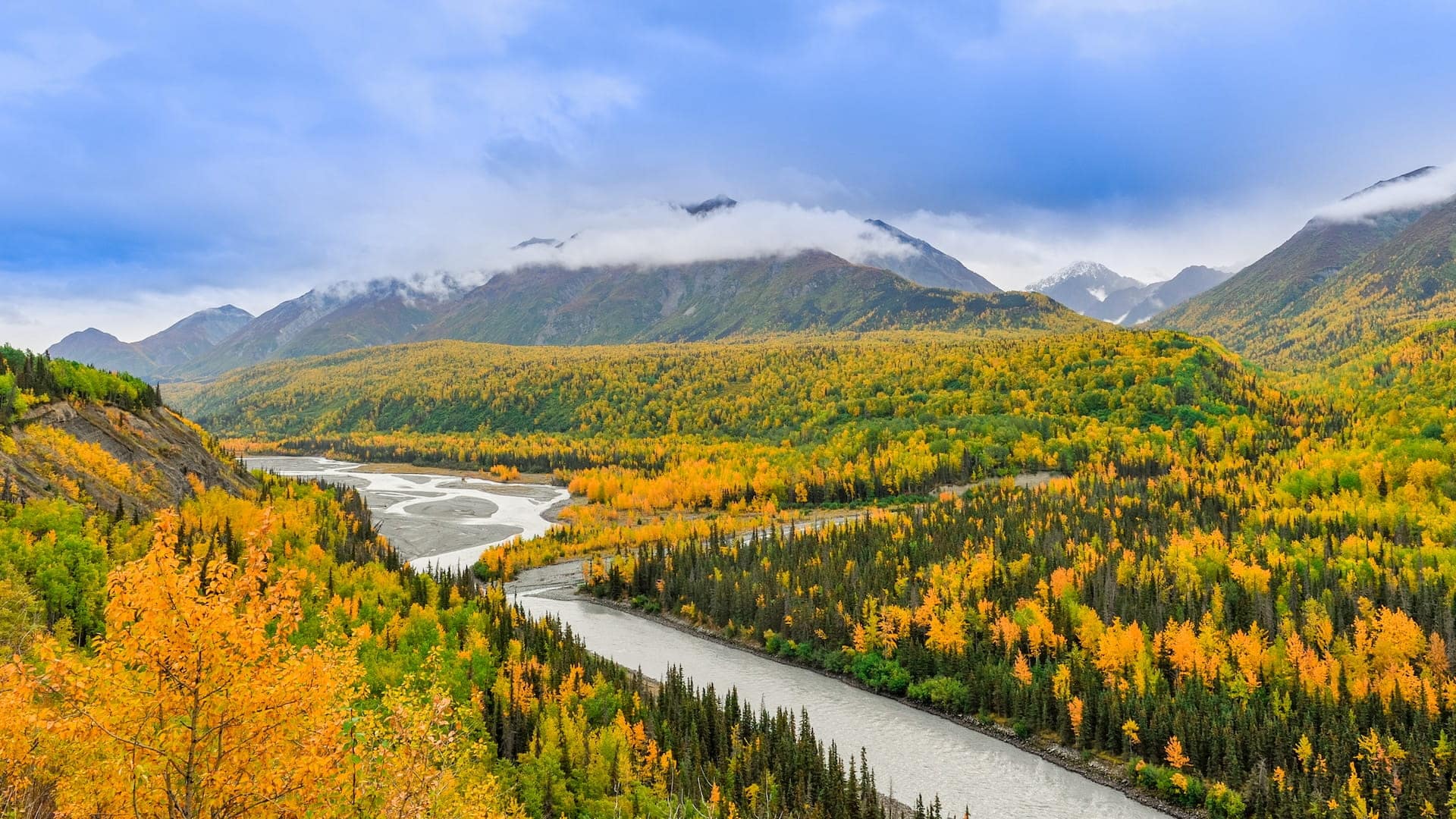Are you considering a change of scenery? Alaska might be the place for you if you’re looking for something beyond the ordinary. This captivating state, known for its wide-open spaces, stunning landscapes, and distinct cultural history, has recently drawn more people to it.
As you contemplate moving to Alaska, you must understand its unique lifestyle and housing market. Through this guide, we’ll provide comprehensive, up-to-date resources to help you through this exciting journey.
Moving to Alaska? This Is What You Should Know
There are a number of excellent reasons to move to Alaska, but it is crucial to familiarize yourself with the ins and outs of this northern frontier before you decide.
While a visual paradise with majestic snow-capped mountains and ample outdoor activities, Alaska is also known for its intense weather, particularly during winter. Other factors like cost of living, housing, job opportunities, and a unique cultural landscape are essential to understand.
Moving and Tax Incentives
Alaska has many incentives to offer potential residents, one of the most attractive being tax benefits. As of 2023, Alaska remains one of eight states with no state income tax, which can significantly impact your monthly budget.
Furthermore, permanent residents can take advantage of the Permanent Fund Dividend, an annual payment made to all living within the state for a full calendar year. However, balancing these benefits with the potential additional costs of living in such a remote location is essential. Here are some pros and cons to consider:
Pros:
- No state income tax
- Yearly dividend check for permanent residents
- Lower property tax rate compared to the national average
Cons:
- Higher cost of goods due to transportation costs
- Potential higher utility costs due to cold winters
- Limited access to amenities and services in more densely populated areas
A Versatile Real Estate Market
The real estate market in Alaska is as diverse as its landscape. Whether you’re looking for a rustic cabin in the woods or a modern apartment in the largest city, Anchorage, there’s something for everyone.

The cost of housing in Alaska tends to be higher than the national average. According to recent data, the average home price in Alaska is around $336,000. In contrast, the average cost of a one-bedroom apartment ranges from $800 to $1,200 per month, depending on the location and amenities.
Rental prices fluctuate drastically based on proximity to city centers and primary industries like oil and gas.
Pros:
- Versatile range of housing options
- Unique living experiences that integrate natural splendor into daily lives
- Some areas have surprisingly affordable rental costs
Cons:
- High cost of housing in major cities like Anchorage
- Limited availability of modern housing in remote areas
- Potentially high maintenance costs due to intense weather conditions
Before deciding, we recommend contacting a local eXp agent to help you navigate the real estate market. They can provide tailored advice based on your budget and lifestyle preferences and detailed information about the best areas in Alaska.
Consider the Cost of Living Expenses
Although Alaska offers significant tax incentives, it’s essential to note that the overall cost of living is higher than the national average. This is due to the high transportation costs of bringing goods to such a remote location, impacting prices.
As of 2023, a gallon of milk in Alaska costs around $4.00 compared to the national average of $3.50, and a gallon of gas averages $3.50, nearly 50 cents above the national average. Additionally, vehicle costs can be higher due to the need for vehicles suitable for Alaska’s harsh terrains.
Pros:
- No state income tax can help offset higher living expenses
- Permanent Fund Dividend provides additional income for residents
Cons:
- Higher grocery prices due to transportation costs
- Higher vehicle costs due to the need for specialized vehicles
- Higher healthcare costs, particularly in remote areas
Alaska the Community Lifestyle
Alaska boasts a strong sense of community due to its remote location and the need for residents to rely on each other. The state is rich in various cultures and traditions, giving Alaska a unique cultural landscape.
However, remember that amenities available in larger cities might not be accessible in remote Alaskan communities.
Pros:
- Strong sense of community
- Rich cultural opportunities
- Numerous outdoor recreational opportunities
Cons:
- Limited amenities in remote areas
- Higher cost for clothing suitable for Alaskan weather
Dining Out and Entertainment
While Alaska offers a variety of dining and entertainment options, particularly in larger cities like Anchorage, the cost can be higher than in other states. An affordable restaurant meal is about $15 per person, while a mid-range restaurant’s three-course dinner for two can cost around $75.
As for entertainment, outdoor activities like hiking, fishing, and wildlife viewing are often free or low-cost, but ticketed events or cultural experiences may be pricier due to limited availability.
Pros:
- A variety of dining options, including fresh seafood
- Numerous outdoor activities that are free or low-cost
Cons:
- Higher costs for dining out
- Limited entertainment options in remote areas
Visit National Parks
Alaska is home to some of the country’s most stunning national parks, including Denali National Park, Kenai Fjords, and Glacier Bay National Park. These parks offer unforgettable experiences for outdoor enthusiasts, but accessibility can be challenging due to Alaska’s vastness and extreme weather conditions.
Pros:
- Stunning landscapes and wildlife viewing
- Variety of activities, such as hiking, fishing, and camping
Cons:
- Accessibility can be challenging, especially in winter
- Entrance fees for popular parks, though annual passes are available
You and Wildlife: How to Appreciate Nature
Living amidst nature in Alaska can be an enriching experience. From observing the majestic brown bears, polar bears, and mountain goats to watching the Northern Lights, Alaska’s natural splendor offers unique opportunities.

It’s also essential to remember that with this proximity comes a responsibility to coexist with wildlife. Risks could be associated with specific nature, and knowledge of safety measures is vital.
Pros:
- Opportunities to observe unique wildlife and natural phenomena
- Experiencing the tranquility of nature
Cons:
- Potential risks associated with wildlife encounters
- Necessary knowledge and precautions for living safely with wildlife
Choosing to Live Sustainably
In Alaska, many residents opt for sustainable lifestyles such as living off-grid or subsistence hunting. This way of life can be fulfilling but comes with significant challenges.
Living off-grid in Alaska requires substantial preparation for long, harsh winters, including stocking up on provisions and a reliable heat source.
Pros:
- Lower environmental impact
- Self-reliance can be fulfilling and rewarding
Cons:
- Requires substantial preparation and resilience
- Potential for isolation, especially in winter months
Fishing, Hunting, and Living Off-Grid
Many Alaskans find great enjoyment and sustenance in fishing and hunting, which are integral to Alaskan culture. Living off-grid can be exciting, allowing you to live sustainably and harmoniously with nature. However, it requires preparation, skill, and resilience.

Pros:
- Direct connection to nature and food sources
- Sustainability and reduced environmental footprint
Cons:
- Requires survival skills and preparation
- Potential for isolation and hardship, especially in the winter
Natural Elements: The Weather
Alaska is known for its extreme weather conditions, from endless summer sunshine to long, cold winters. While the midnight sun can be an exhilarating experience, the lack of daylight during winter can be challenging, leading to conditions like Seasonal Affective Disorder (SAD).
Pros:
- Experiencing the unique phenomenon of the midnight sun
- Beautiful winter landscapes and Northern Lights
Cons:
- Long, cold, and dark winters can be challenging
- Potential for Seasonal Affective Disorder (SAD)
Employment Statistics and Factors to Consider
Alaska’s unemployment rate has been higher than the national average, mainly due to the seasonal nature of many jobs. The major industries are oil, fishing, and tourism. However, opportunities for remote work have increased in recent years, making Alaska a viable option for remote workers.
Pros:
- High demand for specific skill sets
- Opportunities for seasonal work
Cons:
- Higher unemployment rate than the national average
- Reliance on a few industries for most employment opportunities
Reliable Transportation
Getting around in Alaska may be more challenging than in other states due to the geographical vastness and rugged terrain. Owning a four-wheel-drive vehicle can be very advantageous, especially during winter.
Despite these obstacles, Alaska boasts an extensive ferry system, airports, and a robust road network, making travel feasible.
Pros:
- Extensive ferry system for coastal travel
- Good road network for travel by car
Cons:
- Rugged terrain can make travel difficult, particularly in remote areas
- Owning a reliable, all-weather vehicle is almost essential
Tips on How to Move to Alaska
Moving to Alaska can be a significant transition, and you must be prepared for the challenges. From ensuring you have the proper clothing and equipment to understanding the cultural nuances, careful preparation can help ensure a smoother move.
Pros:
- A well-planned move can help ease the transition
- Opportunities to learn new skills and adapt to a different lifestyle
Cons:
- Potential for culture shock or isolation, especially in remote areas
- Requires careful planning and potentially significant investment in suitable clothing and equipment
FAQs
Here are answers to some frequently asked questions about moving to Alaska:
Is it a good idea to move to Alaska?
Moving to Alaska can be great if you enjoy outdoor activities and unique wildlife and don’t mind cold winters. It’s best suited for individuals seeking a slower life and escaping urban congestion.
Is it expensive to live in Alaska?
Living in Alaska can be more expensive than the national average due to high heating, groceries, and transportation costs. However, the state does not have an income tax and offers residents an annual Permanent Fund Dividend.
How much money do you get to move to Alaska?
Alaska does not pay people to move there, but it does provide an annual Permanent Fund Dividend, which has ranged from $1,000 to $2,000 per person in past years.
Is it hard to get a job in Alaska?
Jobs in Alaska can be seasonal and concentrated in industries like fishing, oil, and tourism. However, remote work opportunities are expanding, which offers more possibilities.
How much is a gallon of milk in Alaska?
As of 2023, the average cost of a gallon of milk in Alaska is approximately $4.00, but it can vary depending on the region.
What is a good salary to live in Alaska?
A good salary in Alaska would be around $70,000 to $80,000 per year for a comfortable living, depending on your lifestyle and where you live.
Do you pay taxes in Alaska?
Although some municipalities impose local sales taxes, Alaska does not have a state income tax or sales tax. Property tax rates vary by location.
What is the most common job in Alaska?
The most common jobs are in the fishing, oil, and tourism industries. Healthcare and education sectors also offer employment.
Can you drive a car to Alaska?
You can drive to Alaska via the Alaska Highway, which runs through Canada. It’s a long, remote drive, so planning is essential.
How long is the night in Alaska?
Some areas of Alaska experience 24 hours of darkness on the winter solstice, while the summer solstice can bring 24 hours of daylight. This varies significantly by location.
Is there WIFI in Alaska?
Yes. However, service may be limited or unavailable in certain areas.
For a seamless move to Alaska, don’t hesitate to contact an eXp real estate agent who can provide valuable insights, support, and assistance.
Wrap-Up About Moving to Alaska
With its unique beauty, wildlife, and lifestyle, Alaska offers an enriching living experience. However, moving to this remote state requires considering the cost of living, transportation, weather, and job opportunities.
If you’re prepared for the adventure and longing for a slower pace of life, Alaska can be an enriching place to call home. Contact an eXp real estate agent today to embark on this exciting journey.





